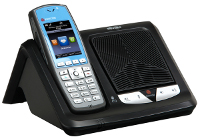Note: This is a guest post by Kyle Lagunas, HR Analyst at software selection resource Software Advice, who has recently written an article exploring creative benefits offerings that promote a culture of wellness, and go a long way to motivate, engage, and retain employees.
Featured in Lagunas’ full article on his HR blog, VoIP Supply is ahead of the game in offering benefits to engage and motivate employees with generous PTO programs, flexible schedules including work from home options, company funded disability insurance, and 401K benefits that exceed the norm.
However, as Lagunas points out below, there are simple things a company can do that will make a huge difference. For example, why not leverage Unified Communications (UC) and VoIP technology to their full extent by allowing workers to remain connected whenever they choose or wherever they neeed to be?
Competitive Benefits Aren’t Special
Fact: A standard package of health, dental and vision insurance, some paid vacation, a modest life insurance policy is not “competitive.”
Although attracting and retaining top talent continues to be a challenge for business leaders, most employers still boast of their competitive benefits offerings… which are really nothing special (“comparable,” even). And employers who continue to offer the same old benefits package will fall behind in attracting, motivating and retaining the best.
Unified Communications Helps Balance Work & Personal Lives
 The lines between work and personal lives are blurring for many employees. They’re seeking balance between the two, and are finding value in the ability to choose the specific benefits that best meet their needs at this point in their lives.
The lines between work and personal lives are blurring for many employees. They’re seeking balance between the two, and are finding value in the ability to choose the specific benefits that best meet their needs at this point in their lives.
And employers are learning that, when chosen and implemented effectively, however, benefits can demonstrate leadership’s concern for the well-being of employees, reinforce cultural values, and foster deeper employee engagement.
According to James Berkeley, Director of Berkeley Burke International, however, there’s still a disconnect. “The decisions made regarding what benefits to offer are often based on subjective viewpoints, viewpoints that are far removed from the actual needs of employees.” Rather than assuming you know what your employees want, Berkeley suggests you ask them.
Though answers will vary, many people are interested in more benefits in specific areas – Healthy Living and Wellness, Flexible Work Options, and Commuting Relief Benefits—and perks you can afford (like VoIP Supply’s fully stocked kitchen).



 In the world of VoIP, today’s businesses expect a lot of options. Phone conferencing, voice mail emails, call forwarding, software that has comprehensive reporting – it’s all expected as part of the regular package.
In the world of VoIP, today’s businesses expect a lot of options. Phone conferencing, voice mail emails, call forwarding, software that has comprehensive reporting – it’s all expected as part of the regular package.





